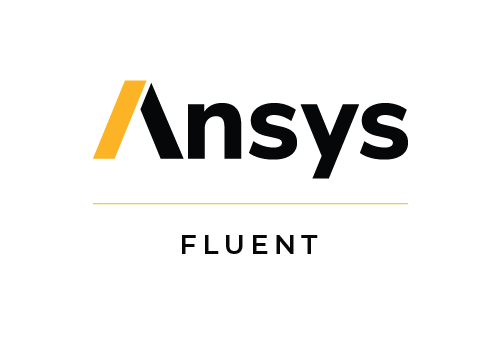Yes, most modern CFD software supports access from numerous devices and platforms. This implies that you may work on your simulations from a desktop computer, laptop, or mobile device, as well as transition between operating systems including Windows, Mac, and Linux. Some software also provides cloud-based solutions, giving users even greater flexibility in accessing and running simulations.
List of Best CFD Software
Ingrid Cloud is an advanced software platform that utilizes automated cloud technology to deliver accurate and precise wind simulations. With Ingrid Cloud, complex wind analysis processes are simplified and made accessible to all, eliminating the nee...Read More Ingrid Cloud
GASP is a project management software designed to streamline your workflow. With its intuitive task monitoring and real-time collaboration features, GASP empowers your team to increase productivity, meet project milestones, and achieve success effort...Read More GASP
OpenFOAM is a CFD software designed by OpenCFD Ltd in 2004. This open-source platform offers advanced features for fluid dynamics, solid mechanics, and electromagnetics. With biannual updates and support from ESI Group, OpenFOAM is a highly trusted a...Read More OpenFOAM
RocketCDN is solution for lightning-fast content delivery and exceptional user experience. With seamless integration for all CMS platforms, effortless configuration, and unrivaled support, RocketCDN elevates website speed and surpasses the competitio...Read More RocketCDN
TinyPNG, the must-have image compression solution for developers and designers. Say goodbye to slow load times and hello to a seamless user experience with our powerful tool. Reduce file sizes of WebP, PNG, and JPEG formats without compromising on qu...Read More TinyPNG
Ansys CFX is a Computational Fluid Dynamics (CFD) software known for its powerful solver capabilities. With its ability to accurately simulate complex fluid flows and advanced features such as turbulence models and multiphase flow analysis, it is the...Read More Ansys CFX
Autodesk CFD is simulation software designed to help engineers accurately predict fluid dynamics and thermal behavior. With its intuitive interface and advanced analysis tools, it streamlines design processes, reduces the need for costly prototypes,...Read More Autodesk CFD
SimScale is a engineering simulation platform designed for seamless collaboration and comprehensive physics capabilities, all from the convenience of your web browser. With over 500,000 trusted users, SimScale offers affordable and precise simulation...Read More SimScale
COMSOL Multiphysics is an advanced simulation software that integrates diverse physics phenomena to assist engineers in creating detailed models. Featuring specialized modules and functions such as Model Builder and Application Builder, it simplifies...Read More COMSOL Multiphysics
FLOW-3D is a highly sought-after CFD software renowned for its precision and efficient handling of complex free-surface flow simulations. With a longstanding reputation in the field and unmatched customer support, it is trusted by numerous users. FLO...Read More FLOW-3D
Stallion 3D, an advanced software equipped with cutting-edge modeling features, flawless rendering, and user-centric design tools. Designed for experts, it unleashes limitless creativity, simplifies processes, and ensures precision in intricate proje...Read More Stallion 3D
PowerFLOW, developed by Dassault Systèmes, is a simulation software designed for accurate and in-depth analysis of fluid dynamics and aerodynamics. This powerful tool enables engineers to refine designs for maximum efficiency and per...Read More PowerFLOW
6SigmaET is a thermal simulation software that is renowned for its precise performance across various applications. Its exceptional features ensure reliable and accurate results, making it an indispensable tool for engineers seeking efficiency in the...Read More 6SigmaET
AKL FlowDesigner, a thermal fluid analysis software developed in partnership with Osaka University. This advanced tool utilizes non-parametric inverse analysis to simplify design enhancements, accurately portray HVAC effects, and support efficient ur...Read More AKL FlowDesigner
UrbaWind - a world-renowned provider of computational fluid dynamics (CFD) software specializing in wind analysis. Our state-of-the-art technology and professional services are utilized by industries such as renewable energy, construction, and transp...Read More UrbaWind
Ansys Sherlock solution for predicting failures in real-world scenarios. Equipped with advanced analytics and a user-friendly interface, engineers can efficiently optimize their design processes to create robust and long-lasting products. This reliab...Read More Ansys Sherlock
Siemens NX is a leading 3D printing software that provides a comprehensive set of tools for creating high-quality products. Its features include generating detailed visuals of support materials for each part, allowing you to identify and address any...Read More Siemens NX
Ansys Fluent is a highly advanced fluid simulation software known for its exceptional physics modeling capabilities and unparalleled accuracy. Its cutting-edge technology makes it the preferred choice for engineers and researchers in various industri...Read More Ansys Fluent
SimFlow, Computational Fluid Dynamics (CFD) analysis software compatible with Windows and Linux. Leveraging the renowned OpenFOAM libraries, it provides advanced tools for simulating 2D and 3D models with unparalleled accuracy. Experience the flexibi...Read More SimFlow
Learn More About CFD Software
- What Is CFD Software?
- What Are The Recent Trends In CFD Software?
- Benefits Of Using CFD Software
- Important Factors To Consider While Purchasing CFD Software?
- What Are The Key Features To Look For In CFD Software?
- Why Do Businesses Need CFD Software?
- How Much Time Is Required To Implement CFD Software?
- What Is The Level Of Customization Available In CFD Software?
- Which Industries Can Benefit The Most From CFD Software?
- Conclusion
What Is CFD Software?
CFD software, also known as Computational Fluid Dynamics software, is a specialized computer program used to simulate and analyze fluid flow and heat transfer in a virtual environment. It is widely utilized in a variety of industries, including aerospace, automotive, energy, and architecture, to optimize designs, conduct virtual tests, and anticipate fluid system performance prior to the creation of real prototypes.
This software uses mathematical equations and methods to discretize the fluid domain into small cells, which are then solved iteratively to predict fluid behavior in a physical system. CFD models may capture complicated flow phenomena that are difficult or impossible to recreate in a laboratory, making them an important tool for engineers and designers.
One of the most important advantages of CFD software is its ability to handle turbulent flows, which are notoriously difficult to study using conventional methods. Furthermore, it can accurately describe a variety of boundary conditions, including fluid-solid interactions, heat transfer, and multiphase flows, making it suited for a wide range of applications. When selecting CFD software, evaluate its usability, accuracy, and compatibility with other tools and applications.
ANSYS Fluent, OpenFOAM, and COMSOL Multiphysics are three notable CFD software packages on the market, each with its own set of features and specialties. Investing in CFD software can help firms cut development time and costs, improve product performance, and reduce risk. CFD software, with its extensive features and widespread use in sectors, is a must-have tool for any engineering or design team trying to optimize processes and products.
What Are The Recent Trends In CFD Software?
Technological breakthroughs have significantly increased the capabilities and efficiency of Computational Fluid Dynamics (CFD) software. CFD software simulates and analyzes fluid behavior and interactions with solid objects. It has become a must-have tool for industries and researchers looking to build and optimize goods, processes, and systems.
One of the most significant trends in CFD software is the transition to cloud-based solutions. This enables greater scalability and flexibility in processing capacity, as well as simpler cooperation among team members. It also minimizes the price of acquiring and maintaining in-house computing resources. Another trend is to incorporate Artificial Intelligence (AI) and Machine Learning (ML) algorithms into CFD software. These technologies can significantly increase the accuracy and speed of simulations, resulting in more efficient product design and optimization.
AI and machine learning can also help with automatic meshing, which saves time and effort on pre-processing. The development of specialist CFD software for certain industries has also been increasing. This includes software for airplanes, automobiles, renewable energy, and numerous other industries. These industry-specific solutions provide tailored features and tools to match each industry's particular simulation requirements.
CFD software is also getting more user-friendly and understandable to non-experts. User-friendly interfaces, automated workflows, and built-in tutorials are just a few of the elements that make CFD software more intuitive and accessible. This enables more engineers and researchers to use CFD in their work without requiring substantial training. Finally, there is an increasing demand for open-source CFD software.
These are open-source software products that are always being improved by a developer community. Open-source CFD software is a cost-effective choice for individuals on a restricted budget, and it promotes collaboration and knowledge exchange within the CFD community. As you assess your CFD software options, keep these recent trends in mind and choose which features and capabilities are most critical for your individual requirements. As technology advances, CFD software will evolve and improve, providing increasingly more powerful tools for fluid analysis and design.
Benefits Of Using CFD Software
Traditional approaches for fluid dynamics and engineering, such as experiments and hand computations, can be time-consuming, expensive, and have limited capabilities. This is where computational fluid dynamics (CFD) software comes into play, offering an efficient and cost-effective method for evaluating and visualizing fluid flow and heat transfer.
Here are some of the main advantages of utilizing CFD software.
1. Accurate And Trustworthy Findings: CFD software, using modern algorithms and numerical methods, can effectively simulate complicated fluid flow dynamics, yielding more trustworthy findings than older methods.
2. Time And Cost Savings: CFD software enables engineers to rapidly simulate and assess various design iterations, avoiding the need for physical prototypes and costly trials. This leads in considerable time and cost savings during the design and development phases.
3. Improved Visualization: CFD software generates 2D and 3D visualizations of fluid flow and heat transfer, allowing engineers to spot problem areas and enhance designs. This improves the overall performance and efficiency of the product.
4. Flexibility And Adaptability: CFD software can solve a variety of fluid flow issues, including single-phase, multiphase, and transient flows. This adaptability makes it appropriate for a wide range of industries, including automotive, aerospace, power generation, and others.
5. Improved Design Optimization: By properly anticipating fluid flow in a system, CFD software enables engineers to improve designs for optimal efficiency and performance. This leads to higher product quality and lower development expenses.
6. Virtual Testing And Analysis: CFD software provides a virtual testing environment in which engineers may test and analyze numerous scenarios without requiring real prototypes. This makes it easier to detect potential problems and improve designs before they are created.
7. Cooperation And Communication: CFD software improves cooperation and communication among team members by allowing them to readily share and visualize simulation findings, resulting in a more efficient and successful design process.
Important Factors To Consider While Purchasing CFD Software?
Choosing the correct CFD software is critical for engineers, academics, and organizations who want to accurately simulate and evaluate fluid dynamics in many applications. However, with so many options on the market, it can be difficult to choose which software best meets your individual requirements.
To help you make an informed buying decision, we've compiled a list of the most critical variables to consider when choosing CFD software.
1. Simulation Capabilities: The first and most important consideration is the software's simulation capabilities. This encompasses the variety of physical phenomena that can be simulated, such as incompressible and compressible flows, turbulent and laminar flows, multiphase flows, and so on. Make sure the software appropriately captures the fluid's behavior in your specific application.
2. Meshing And Preprocessing: The quality of the mesh has a direct impact on the accuracy of the simulation results. Look for CFD software with automatic mesh generation and adaptive mesh refining capabilities. This will save you time and effort while creating the mesh for your simulations. Furthermore, a simple pre-processing interface will allow you to set up your simulation quickly and efficiently.
3. Solver And Post-Processing: The solver is the heart of any CFD software, responsible for resolving the governing equations and producing outputs. When evaluating alternative software, take into account the solver's correctness, speed, and stability. Furthermore, a user-friendly post-processing interface is required for viewing and interpreting simulation data.
4. User-Interface And Technical Support: A user-friendly interface is essential, especially if you're new to CFD simulation. Look for software with a well-designed, user-friendly interface that includes numerous tutorials and guidelines. In addition, technical support is required for resolving issues and ensuring that the software runs smoothly. Make sure the software provider provides dependable and quick technical assistance.
5. Scalability And Compatibility: If you intend to utilize the program for larger, more sophisticated simulations in the future, evaluate its scalability. Will the software be capable of handling the additional computing demands? Also, be sure the software is compatible with your computer's operating system and hardware specifications.
6. Cost And license: Finally, think about how much the program will cost and what license choices exist. Most CFD software has multiple license choices, including perpetual, subscription-based, and pay-per-use. Make sure you select the one that best meets your budget and usage needs.
What Are The Key Features To Look For In CFD Software?
CFD (Computational Fluid Dynamics) software allows engineers and researchers to simulate and study fluid flow and behavior in a variety of applications. With so many options on the market, it might be difficult to find the best CFD software for your needs. To help you make an informed decision, here are some crucial characteristics to look for in CFD software.
1. User-Friendly Interface: The software's interface should be simple and easy to use, providing for seamless navigation and access to all capabilities.
2. Pre-Processing Capabilities: A decent CFD program should include robust pre-processing features like geometry creation and mesh generation, which will make it easier to set up and prepare your simulation.
3. Robust Solver: The solver is the heart of CFD software, and a good one should provide accurate and dependable results for a wide range of simulations, including steady-state and transient ones.
4. Multidisciplinary Capabilities: Look for CFD software that can solve a wide range of fluid flow issues, such as single-phase, multiphase, and compressible flows, as well as conjugate heat transfer.
5. Post-Processing capabilities: Visualizing and evaluating simulation results is critical, and effective CFD software should have extensive post-processing capabilities to assist you better comprehend your findings.
6. Parallel Processing: As simulations become more complicated, parallel processing has become an important function in CFD software. It enables faster computing times and the ability to handle larger, more complicated models.
7. Customization Options: Look for software that allows you to modify it to your individual needs by writing user-defined functions and implementing custom models.
8. Technical Help: Using CFD software requires access to technical help. Look for a software vendor who provides full technical assistance to assist you with any issues that may arise.
9. Compatibility: Ensure that the software you select is compatible with your operating system, hardware, and any other software packages you may use in your workflow.
10. Pricing: Finally, assess the software's pricing and whether it is within your budget. While free or open-source choices exist, they may not provide the same level of features and support as premium software.
Why Do Businesses Need CFD Software?
Businesses require CFD (Computational Fluid Dynamics) software for a variety of reasons, including product design and optimization, environmental impact assessments, and simulation of complex fluid dynamics. This powerful tool enables businesses to understand and forecast how a fluid (gas or liquid) will behave in a given situation, delivering vital insights and assisting with decision-making processes.
First and foremost, CFD software is critical for industries involving fluid dynamics, such as aerospace, automotive, manufacturing, and oil & gas. These businesses use CFD models to design and enhance their goods, which eliminates the need for costly and time-consuming physical testing. Companies can use CFD software to properly examine and enhance the performance of their designs, resulting in higher-quality goods and greater cost savings.
Furthermore, CFD software enables firms to model and analyze a variety of scenarios, including airflow in buildings, hydrodynamics in ships, and thermal management in electronic components. This data is critical for improving designs and spotting possible problems before they arise, eventually saving time and money. One of the most significant advantages of using CFD software is the ability to replicate real-world situations and scenarios.
This is especially important for organizations in highly regulated industries, as CFD simulations can help them comply with safety and environmental laws. Businesses may assure product and operational safety by precisely forecasting and comprehending fluid behavior. CFD software has a considerable advantage over traditional analytical approaches since it can simulate highly complicated and non-linear systems.
This allows firms to obtain a better knowledge of dynamic behavior and make more educated decisions. Furthermore, CFD software's superior visualization capabilities help organizations communicate and present their findings to stakeholders more effectively.
How Much Time Is Required To Implement CFD Software?
The time required to deploy CFD software varies based on numerous aspects, including the software's complexity, the size and complexity of the problem to be solved, and the user's skill. It can take anywhere from a few days to several weeks, but in some cases, months. The initial setup and installation of the software may usually be finished in a few days; however, the amount of time necessary for the user to become familiar with the product's interface and functionality varies.
Beginners may need a few days to grasp the fundamentals, while expert users may require less time. Once the user is comfortable with the software, the time necessary to simulate and evaluate a specific situation will be determined by its complexity. Simple problems may take a few hours, whereas more complex problems may require several days or weeks.
It is vital to remember that in order to achieve accurate and reliable results, the user may need to run many simulations and adjust their model, which might increase the overall time required to use CFD software. It is also critical to grasp the underlying physics and equations involved in the problem at hand.
This may need the user investing time in learning important concepts and theories, which can extend the entire implementation time. Overall, the time required to develop CFD software might vary greatly depending on the specific circumstances. To ensure efficient and accurate software utilization, it is critical to prepare ahead of time and provide adequate time for learning, setup, and problem fixing.
What Is The Level Of Customization Available In CFD Software?
One of the most important considerations when selecting CFD software is the level of customization provided. This refers to the software's capacity to be customized to match the user's specific requirements and preferences. One of the primary advantages of CFD software is its great level of customizability. This is because fluid dynamics simulations are difficult and require a wide range of variables and parameters to adequately simulate real-world circumstances.
Most CFD software packages provide a variety of customization choices, such as meshing techniques, turbulence models, and boundary conditions. This enables users to fine-tune their simulations and produce more accurate results. In addition to these technical customization capabilities, many CFD software packages include a user-friendly interface that allows users to readily modify and adjust settings based on their unique requirements.
This can save time and shorten the learning curve for new users. Another factor to consider is the degree of flexibility available in terms of visualization and post-processing. Most CFD software provides a variety of tools for analyzing and visualizing simulation data, including color mapping, vector plots, and graphs. These tools can frequently be adjusted to display data in the most useful and relevant manner to the user's needs.
Overall, CFD software customisation can have a significant impact on simulation accuracy and efficiency. Buyers must carefully analyze their specific wants and requirements before selecting a software package that provides the level of customisation required for their specific applications.
Which Industries Can Benefit The Most From CFD Software?
CFD (Computational Fluid Dynamics) software is a powerful tool that allows for the simulation of fluid flow and heat transfer in a wide range of industries. Its ability to accurately model complex and dynamic fluid behavior makes it an invaluable tool for various applications.
Here are the industries that can benefit the most from utilizing CFD software:
1. Automotive: In the automotive industry, CFD software can be used for aerodynamic analysis, optimizing engine cooling systems, and studying the impact of wind and air resistance on vehicle performance. This helps in improving vehicle design, reducing drag, and increasing fuel efficiency.
2. Aerospace: CFD software plays a crucial role in the design and testing of aircraft and aerospace components. It helps in analyzing air flow around specific parts, evaluating thermal management systems, and optimizing aircraft performance.
3. Energy: CFD software is widely used in the energy industry for modeling fluid flow in power generation processes such as turbines, heat exchangers, and pumps. It allows for the evaluation and optimization of these systems to improve efficiency and reduce energy costs.
4. Chemical And Process Engineering: CFD software is a valuable tool in the chemical and process engineering industries for modeling fluid flow and heat transfer in chemical reactions, mixing and separation processes, and equipment design. This helps in improving process efficiency, reducing energy consumption and cost, and ensuring safety.
5. HVAC: CFD software is used in the heating, ventilation, and air conditioning (HVAC) industry for designing and optimizing building ventilation systems. It can simulate airflow, temperature distribution, and pollutant dispersion to ensure optimal indoor air quality and energy efficiency.
6. Pharmaceuticals: CFD software is useful in the pharmaceutical industry for simulating fluid flow and drug delivery in various delivery systems such as inhalers and nebulizers. This helps in optimizing drug delivery and ensuring the quality and consistency of pharmaceutical products.
7. Marine And Offshore: CFD software is utilized in the marine and offshore industries for analyzing ship and offshore structure designs, optimizing propeller and hull designs, and studying fluid behavior around marine structures. This helps in improving efficiency, reducing drag, and ensuring safety. By providing accurate and detailed analyses, CFD software can greatly benefit these industries by saving time and costs in the design and testing processes, improving product performance, and enhancing safety and efficiency. Whether you are an engineer, researcher, or designer, investing in CFD software can greatly benefit your work and take it to new heights.
Conclusion
To summarize, investing in CFD software can bring various advantages for businesses wishing to streamline their design and simulation processes. Businesses that use the correct CFD software can enhance product quality, save costs, and save time during the development process. Before making a purchase, extensively investigate the many software solutions available, taking into account features, capabilities, ease of use, and support.
It is also advisable to study reviews and seek advice from other industry pros. Furthermore, while price may be a decisive factor, it is critical to evaluate the long-term benefits and return on investment that a decent CFD program may offer. Finally, the correct CFD software may help firms gain a competitive advantage, increase efficiency, and achieve superior overall results.
So, take the time to carefully consider your options and select CFD software that is tailored to the specific demands of your company. With the correct software, you can improve productivity and success in your design and simulation operations.
CFD Software FAQ's
Can CFD Software Be Accessed Across Multiple Devices And Platforms?
Is CFD Software Future-Proof and Adaptable To Emerging Technologies Like Ai, Blockchain or Iot?
Yes, CFD software is continually evolving and adapting to new technologies such as artificial intelligence, blockchain, and the Internet of Things. Many CFD software companies are introducing new technology into their systems to improve accuracy, efficiency, and user experience. With the advancement of these technologies, CFD software will continue to progress and stay future-proof, giving engineers and researchers new tools for analyzing and optimizing designs.
Is There A Free Trial Offered To Assess CFD Software Before Committing?
Is there a free trial to assess CF?Yes, most CFD software suppliers provide a free trial period in which consumers can evaluate the product before making a purchase. During the trial, users can test the software's features, functioning, and usability. This enables them to make an informed choice about whether the product satisfies their requirements and is worthwhile investing in. It is recommended that you take advantage of the free trial offer to check the program is appropriate for your unique CFD simulation needs.D Software Before committing?
Does CFD Software Offer Data Security Features And Meet Regulatory Compliance Standards?
Yes, most respectable CFD (Computational Fluid Dynamics) software includes data security safeguards to ensure the privacy and security of user information. This contains encryption protocols as well as methods for authenticating users. Furthermore, leading CFD software adheres to high legal standards, such as ISO 27001, to ensure the security of sensitive data. This gives consumers peace of mind knowing that their data is safe while using the software for simulations.
Can CFD Software Integrate Seamlessly With Existing Tools And Platforms?
Yes, most current CFD software is intended to work easily with existing tools and systems. These software tools are built on open standards and can readily import and export data from other applications and platforms. This results in a more efficient process and the ability to aggregate data from many sources for more thorough analysis. Furthermore, many CFD software include plugins and APIs that enable for even more seamless integration with certain tools and platforms.





















